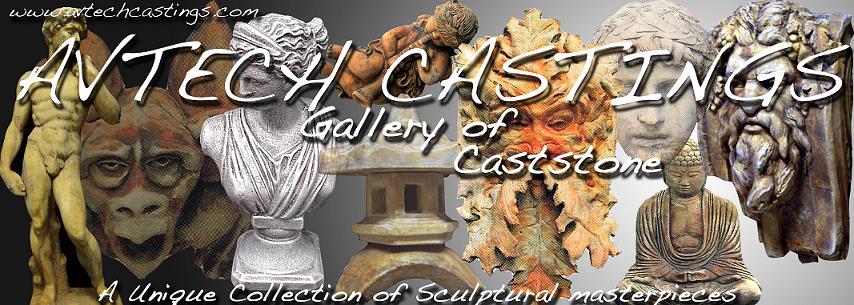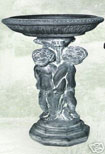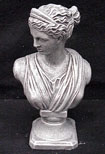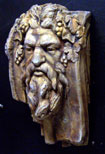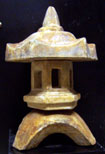Product care and Materials
Care of Concrete Products
It is best to place your concrete statuary product on pavement, blacktop, brick, or crushed rock and on a higher surface. This will help water drain away from the base of the item thereby reducing problems that could occur in severe cold winter months if too much is absorbed into the concrete. In addition, water should not be allowed to collect and freeze inside any section of the statuary item as ice expansion will cause breakage; this applies to birdbaths, fountain bowls and shells, planters, dishes, and areas in a statue that allow water to collect. In the cold winter months the bowls should be drained and turned over, then covered, or stored inside. For planters, pots, and troughs, the drain holes should be kept clear so that water will always drain out and will not accumulate and freeze. Avtech Casting ensures that micro-air entrainment technology is used in the concrete so that freeze-thaw damages are much reduced, but following these precautionary measures will also help to maintain the ornament's beauty over many years.
Materials - Avtech Castings manufactures products in two different materials as follows:
1. Concrete, which is made to cast stone standards to ensure freeze-thaw resistance to the extreme cold, wet and subzero conditions that are experienced in Northern climates. The freeze- thaw occurs when wet concrete sitting on moist surfaces absorbs water then undergoes several freezing and thawing cycles over the winter months. This stress on the concrete normally causes shaleing or flaking, and eventually can cause breakage to even normal concrete. However, if the concrete has been made to sub standards (sandy mixtures) and for warmer weather climates and from abroad, then the concrete will have no chance at all of surviving harsh weather, and will eventually breakdown.
Freeze-thaw resistance concrete is achieved by Avtech Castings using a micro-air ingredient in the cement / aggregate mixture so that the concrete can achieve a more stable structure containing micro pours that allow proper absorption of moisture without allowing large water pockets to accumulate water and freeze. In short, the concrete is of a far superior type, and the same as that used in large architectural pieces that are seen on century old buildings. This type of concrete can be left outdoors for 12 months of the year.
Concrete is then cured properly to allow it to achieve the proper strength. Even though statuary is reinforced, it can still break if subjected to forces in the wrong direction. Concrete will also break by water collecting in bowls, pots, urns, fountains, and stature pickets, and then freezing. The freezing water then expands thus causing breakage. So it is necessary to dismantle and turn over, or cover, any piece of outdoor statuary that collects water.
Fountains and Birdbaths - Frequent rinsing of the fountain and birdbath bowls and changing of the water will help to minimize lime buildup and white residue due to minerals in the water, and using a water clarifier will reduce the problem with algae forming.
Cast Stone Concrete vs. Natural Stone
Cast stone concrete is more durable than natural limestone (natural rock) due to the process by which it is produced. By hand-forging each part, casted stone gains strength and durability without the air pockets that are common in natural stone.
2. Composite Stone is a lighter weight (25 to 30 %) material that concrete, and is used for fine detailed pieces that are to be used both indoors, or set outside but sealed first and then set in a more protected area, and not in a wet environment. Sealed pieces will also protect the colored finish, but should be positioned out of direct sunlight to prevent ultra-violet rays that cause fading of colours over a period of time. Composite stone should be brought indoors during the harsher winter months.
Because of the natural stone look and antique aged finishes that are achievable with the composite stone, it is highly sought after. However, users should take proper care with it to ensure a long product life.
If the item is to always be left inside, then it doesn’t require a seal and can remain with a matte un-glossed finish.
